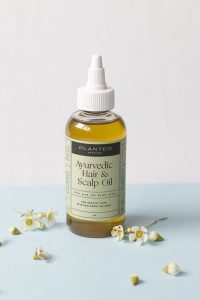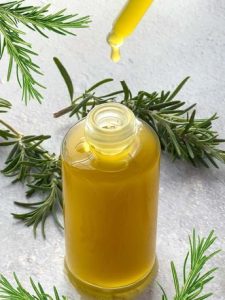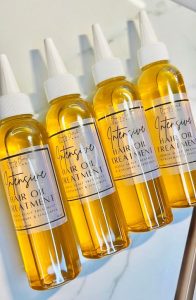
How to Use Oil for Hair Growth? Healthy Hair Journey: Hair oiling is a traditional practice used in many cultures to promote healthy hair. While there’s some evidence suggesting certain oils might benefit hair health, more research is needed to understand the long-term effects on hair growth specifically. This article explores hair oiling, its potential benefits for hair health, and alternative methods for hair growth.
Understanding Hair Growth: The Science Behind It
Hair growth is a complex process influenced by genetics, hormones, and overall health. Here’s a simplified breakdown:
- Hair follicles are tiny pockets in the scalp where hair grows.
- Hair papilla, located at the base of the follicle, is responsible for hair growth.
- Blood supply delivers nutrients to the hair papilla, which fuels hair growth.
Factors Affecting Hair Growth
Several factors can influence hair growth, including:
Genetics:
Hair growth patterns and thickness are largely determined by genes.
Nutrition:
A balanced diet rich in essential vitamins and minerals is crucial for healthy hair growth.
Scalp health:
A healthy scalp free from dandruff and irritation provides a good environment for hair growth.
Stress:
Chronic stress can negatively impact hair growth.
Hair Oiling: A Traditional Practice
Hair oiling involves applying oil to the scalp and hair with the belief it promotes hair growth and overall hair health. Here’s a closer look:
- Types of hair oils: There are many hair oils used, including coconut oil, argan oil, and jojoba oil.
- Application methods: Hair oiling can be done as a pre-shampoo treatment or leave-in conditioner.
Potential Benefits of Hair Oiling
While research on hair oiling and hair growth is ongoing, some studies suggest potential benefits:
- Moisturization: Hair oils can help hydrate dry hair and scalp, preventing dryness and breakage.
- Scalp health: Some oils may have anti-inflammatory properties that soothe an irritated scalp.
- Shine and manageability: Hair oils can add shine and improve manageability, making hair easier to style.
Alternative Practices for Healthy Hair Growth
Here are some evidence-based practices that can promote healthy hair growth:
- Scalp massage: Regularly massaging your scalp can improve blood circulation, which may benefit hair growth.
- Healthy diet: Ensure your diet includes essential nutrients for hair growth, like iron, vitamin D, and biotin.
- Manage stress: Chronic stress can contribute to hair loss. Techniques like yoga or meditation can help manage stress.
- Consult a dermatologist: If you’re concerned about hair loss, a dermatologist can diagnose the underlying cause and recommend treatment options.
Safety Considerations for Hair Oiling
If you choose to try hair oiling, keep these safety tips in mind:
- Patch test: Do a patch test on your inner arm before applying the oil to your scalp to check for allergic reactions.
- Start slow: Begin with a small amount of oil and gradually increase as needed.
- Scalp health: Don’t apply oil to a broken or irritated scalp.
Hair oiling is a traditional practice with potential benefits for hair health, but you need to confirm its effectiveness for hair growth. There are other evidence-based practices that can promote healthy hair growth. If you’re experiencing hair loss, consult a dermatologist to determine the cause and discuss treatment options. Remember, healthy hair starts from within, so prioritize a balanced diet and overall well-being for your hair journey!
Hair Oiling for Healthy Hair: Techniques and Considerations
Hair oiling can be a relaxing and potentially beneficial addition to your hair care routine. Here’s a closer look at application techniques and some important considerations:
- Choosing your oil: Popular options include coconut oil, argan oil, and jojoba oil. Consider your hair type and desired results when selecting an oil. Research suggests that these oils may help with moisturizing and manageability.
Patch Testing for Safety
Before applying any new product to your scalp, it’s crucial to perform a patch test. Here’s how:
- Apply a small amount of oil to your inner arm.
- Wait 24 hours to see if there’s any redness, itching, or irritation.
- If you experience any negative reaction, discontinue use and consult a doctor.
Hair Oiling Techniques
There are two main ways to incorporate hair oiling into your routine:
-
Pre-shampoo treatment: Apply oil to your scalp and hair an hour before shampooing. Massage gently to distribute the oil evenly. Wash thoroughly with shampoo to remove residue.
-
Leave-in conditioner: Apply a small amount of oil to the ends of damp hair, focusing on areas prone to dryness or frizz. Avoid applying directly to the roots, as this can weigh hair down.
When it comes to hair oiling, a little goes a long way. Start with a small amount and increase gradually as needed. Applying too much oil can make hair greasy and difficult to style.
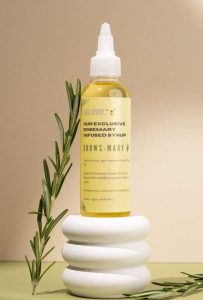
Listen to Your Hair
How to Use Oil for Hair Growth? Hair oiling isn’t a one-size-fits-all approach. Pay attention to how your hair responds to the treatment. If your hair feels heavy or greasy, adjust the amount of oil used or the frequency of application.
For optimal hair health, it’s important to maintain a healthy scalp. If you have concerns about scalp conditions like dandruff or irritation, consult a dermatologist before using hair oils.
Keeping Hair Healthy: Nourishment and Beyond
There are many factors that contribute to healthy hair growth. While hair oiling has been used for centuries, research on its effectiveness for hair growth specifically is ongoing. Here are some well-established practices that can nourish your hair and promote a healthy hair growth environment:
- Scalp massage: Regularly massaging your scalp can improve blood circulation, which may benefit hair growth. Focus on gentle pressure and relaxation techniques.
- Nourishing diet: Ensure your diet includes essential nutrients for hair growth, like iron, vitamin D, and biotin. Aim for a balanced diet rich in fruits, vegetables, and whole grains.
- Manage stress: Chronic stress can contribute to hair loss. Techniques like yoga or meditation can help manage stress and promote overall well-being.
Hair Oiling for Healthy Hair: A Safe Approach
If you’re interested in trying hair oiling, prioritize safety and focus on the potential benefits for overall hair health:
- Patch testing: Before applying any new product to your scalp, it’s crucial to perform a patch test on your inner arm to check for allergic reactions.
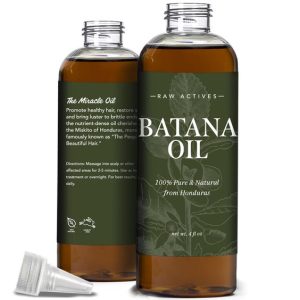
Conclusion
How to Use Oil for Hair Growth? Hair oiling can be a simple and potentially beneficial addition to your hair care routine. By following these tips and prioritizing scalp health, you can explore its potential benefits while prioritizing the overall health of your hair. Remember, healthy hair starts from within, so focus on a balanced diet and good overall well-being for your hair journey!
